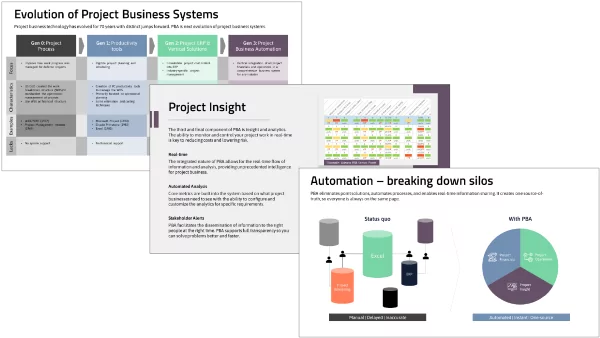The EMPO has the key responsibility for setting the strategy for how projects are managed from beginning to end. For any project-driven organization or companies with significant capital project initiatives, EMPOs can be critically important to success.
EPMO vs PMO
According to PMI’s Pulse of the Profession 2021, the most successful companies had “excellent” or “very good” PMOs.
So what is the difference between an EPMO and a PMO? Mostly it is the strategic focus. A PMO is more tactical in nature, setting direction, standards, best practices, and PMO software tools. An EPMO does the same thing but with an added strategic goal: align the project and portfolio activities with company-wide strategic objectives.
An EPMO has a higher role within the company. It is more visible and seen as a vital part of the company’s strategy. Typically, the head of the EPMO is either a C-level executive or someone who reports directly to a C-level executive.
Bring your EPMO together with Project Business Automation. Download the PBA Quick Guide now.
Example EPMO Structure
EPMO Framework
In addition to the organizational structure mentioned above, the EPMO should have clear business responsibilities and a clear EPMO structure. Following are areas that should be managed within the EPMO framework:
Aligning Enterprise Strategy
The EMPO leader has a seat at the executive table, helping set strategy and turning the company’s decided upon strategy into an executable plan for the EMPO department.
Process Standardization
The EPMO is responsible for standardizing project processes, methodologies, and best practices. It also drives the continuous improvement of these over time.
Financial Reporting
The EPMO is responsible for setting up how project financials are managed and reported. That includes:
- Earned Value Management
- ROI and IRR
- Forecasting / EAC
- Revenue Recognition
- Month-end/Period Close Processes
- Tracking and Auditing
Enterprise Resource Management
The EPMO is responsible for maintaining a single source of truth regarding the resource (people and equipment) availability across the enterprise. This maximizes resource utilization and prevents conflicts.
Hiring and Training
The EPMO hires and trains all the people in the project organization, including project managers, coordinators, project controllers, estimators, etc. This provides visibility across the enterprise regarding needed skillsets, compensation, and training needs.
EPMO Software
Selecting and standardizing on technology for the project organization is another responsibility of the EPMO. EPMO software (or PMO Software) is technology used by the enterprise project management office (EPMO) to manage the operational and financial aspects of the projects for which it is responsible. EPMO software tools enable the EPMO to accomplish its goals in managing the organizations programs and projects efficiently and effectively.
An example of a good EPMO software is Project Business Automation, designed to integrate and standardize all the processes of the project organization.













